By Nicolas Rapold in the May-June 2020 Issue
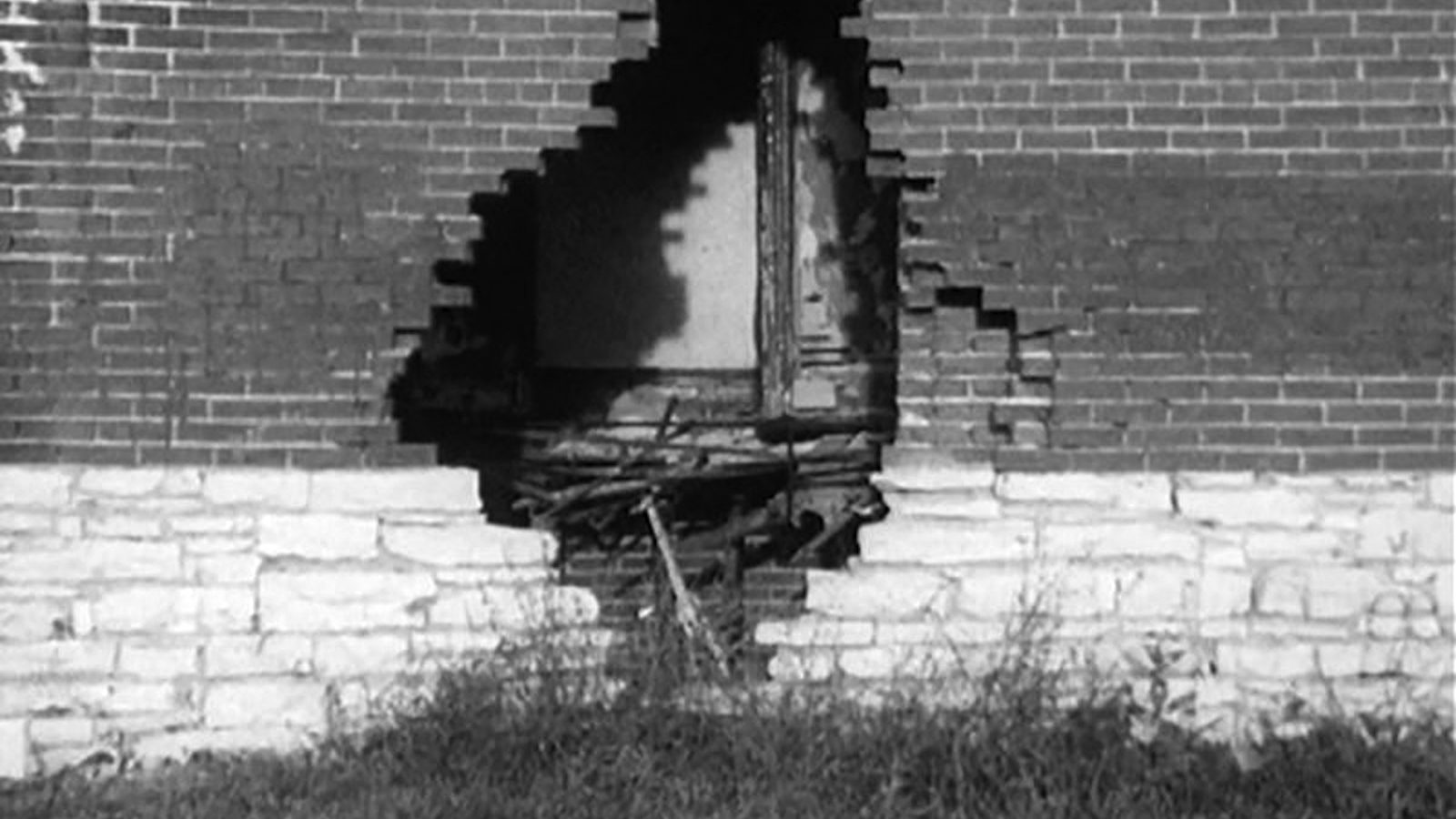
Enter the Void
Christopher Harris’s urban landmark still/here expresses the feelings of absence in ravaged St. Louis neighborhoods to create an afterimage of African-American experience
Popular cinema has drilled us endlessly in the spectacular destruction of metropolises at the hands of supervillains, but for decades in America’s cities, far more mundane systemic forces have been hard at work. Christopher Harris’s still/here (2000) is a landmark film for precisely portraying the sense of absence in devastated urban neighborhoods, through an intricately woven tapestry of sound and images of predominantly African-American northern St. Louis, a city that as a whole dropped from 900,000 to 300,000 in population in the second half of the 20th century. After a rapid-fire Bolex montage of streets, Harris’s mesmerizing black-and-white 16mm feature counterpoints often eerily still shots of damaged and fallen buildings and grassy lots with a haunting mix of audio clips and recorded monologue, phasing in and out of commentary and meditation modes.
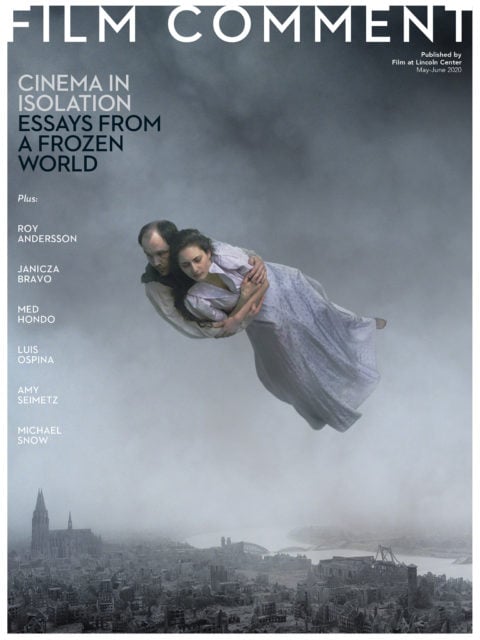
From the May-June 2020 Issue
Also in this issue
But while still/here arrived at a millennial moment soon crowded with apocalyptic “ruin porn” and urban reappropriation of “retro” architectural spaces (and sometimes, perversely, ersatz versions of the destroyed original spaces), Harris’s gaze is distinct for its lucid compassion. A St. Louis native who left the city at 18—still/here is his MFA thesis film from the School of Art Institute of Chicago—Harris has depicted the aftermath of wealth being extracted from this space and the inscription of racism in the landscape. Lives were lived: we feel them in the brick walk-ups, in the Victorian-era houses (of the sort Meet Me in St. Louis re-created on a backlot), in the church with a tree growing through it, in the now-demolished Criterion Theatre movie house. (Another cine-marker dates the moment: a How Stella Got Her Groove Back poster with Angela Bassett.) A stunning segment of lyrical voiceover recounts a dream—or maybe a memory—that suggests a vanished world, Atlantis style, and reflects back to us our shock, wonder, incredulity. (The filmmaker has identified the woman in the voiceover as “my avatar—that’s me.”) Harris’s photography oscillates between walk-through vistas that evoke the open air and a poster-like flatness suggesting the very pages of history. (“To place yourself in the past, touch the screen,” runs the text of a hands-on exhibit, during the film’s detour montage of the Missouri Historical Society.) Here is a work that demonstrates that when social and economic imperatives effectively say that history does not matter, they are saying that you don’t matter.
Increasingly shown over the past decade at festivals and institutions, Harris’s film at the time of its release also anticipated the emphasis on tactility that has informed successive waves of experimental film practice: shots even linger on the craftsmanship of bricks and cornice work (with audio of construction banging). But Harris, a professor and the head of film and video production at the University of Iowa, has varied his own practices significantly from this initial feature; e.g., with the found-footage short Reckless Eyeballing (2004) and his upcoming project Speaking in Tongues.
“What an American film,” director Kamau Bilal said in introducing the True/False Film Fest screening in Columbia, Missouri, where I watched still/here in March. I sat down with Harris at a coffeeshop there, before the current pandemic arrived in full force to empty out streets, turning the film’s record of selective destruction into a renewed warning.
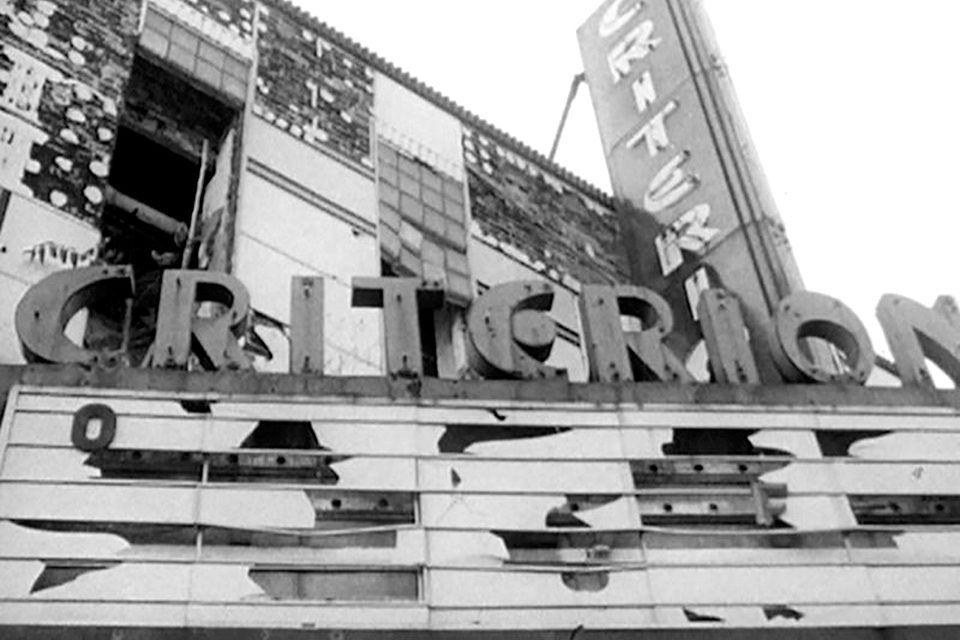
still/here (Courtesy of Christopher Harris)
At the screening, you spoke about the importance of a material(ist) outlook in your work.
It’s a sensibility I bring to my filmmaking. As a kid I would characterize my personality as “extrovert who made himself into an introvert.” So I observed more than I participated. I was very attuned to the way things look and their materiality, so I was really interested in space. The way the world appears as an object. For example, when I see images of the skyline in New York City, what’s interesting to me is not to think about it as a place, but as an object, a thing. I was really attuned to details about physical objects—the way clothes look, the way people wore their hair in the ’70s when I was growing up. Now the world looks different, and that kind of observation is usually called superficial, like the surface or a style. But it’s an expression of the desires of a collective way of being in the world. So the material manifestations—the way cities are designed, the way cars are designed, the way clothing appears—all of that expresses something of desire to me.
A desire which changes over time.
Exactly. You desire different things, and the world looks differently as a result of those changing desires. So when I make a film like still/here, my regard for those spaces is an expression of a kind of desire—my desire is embedded in the materiality of those spaces. There were factors that went into the decision about making a film about spaces as opposed to directly about the people who inhabited those spaces. What I was doing was, I was loving the spaces that those people inhabited. So therefore at a remove, I was loving them. It’s almost like when you have a dear relative who dies, you may cherish one of their possessions.
How does that idea of desire play out in the history of these St. Louis neighborhoods?
I’m loving these spaces because I love the people who live there. But the reason the spaces look this way is because society, for lack of a better word, hated these people. It’s an expression of a serious contempt for the people that lived in those spaces. The social forces array themselves in such a way that this was the result. The built environment ends up with a—you know, it’s like how Bazin talks about the image as a fingerprint. These ruins to me are like a fingerprint of those social forces.
Or worse, maybe a fist print.
Right, punching a hole in a wall. I figured I would flip that on its head and give these spaces a loving gaze. Which is a thing they never get. The whole discourse of these spaces: blight, eyesores… I wanted to look at them—they’re not eyesores. And I don’t mean ruin porn, that they’re beautiful aesthetically. I mean there’s something beautiful in a much more ontological way.
I remember a lot of people in the 2000s got interested in imagery of abandoned buildings, factories, movie theaters, etc. It was like, “Look how cool.”
It’s touristic perhaps. It’s made into a spectacle.
Even postapocalyptic.
Yeah. I think I avoid that sentiment. I don’t know what it was in the zeitgeist, because I was interested in making this film for very personal reasons: this is where I lived, where I grew up in this part of the city. I left St. Louis in 1980, and I lived in Chicago. I didn’t go back very often at all, until I moved back in the early ’90s. It didn’t look like that when I left. This film was an expression of my trauma of returning. And for me it happened overnight, because I didn’t see the transformation. I was dislocated in time myself, when I came back, encountering these places. So I wanted to make a film that dislocated the viewer temporally.
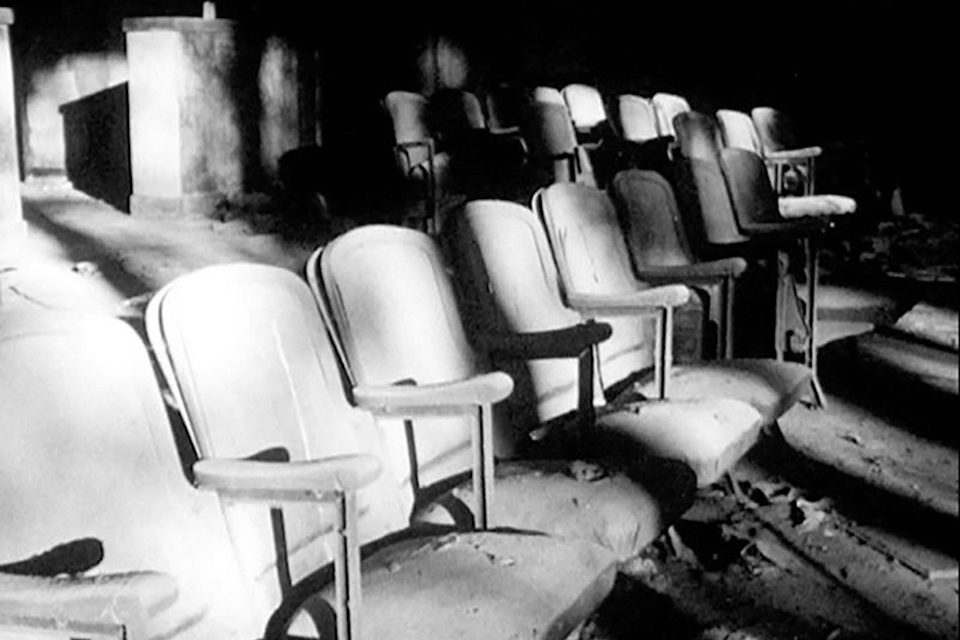
still/here (Courtesy of Christopher Harris)
When you were making the film, were you going to specific places that you knew in 1980 or beforehand?
No, not really. I was just going through the streets that I remember running around with my friends. You just run around the city all day, you know. I must have been 14, 15 at the time. I had a couple of friends who lived on the next block over, and they were kind of adventurous, and I tagged along. You know what we did? We went and played pinball at different places. And I vividly remember when we snuck into the old Busch Stadium at the end of a St. Louis Cardinals–New York Giants game that the Cardinals had to win to make the playoffs. We snuck in to see the end of the game. When they won, we were trying to jump over the barricade to rush the field, like thousands of people. And the security guard picked us to stop, because we were 15-year-old black kids. And I remember in downtown St. Louis, there was an old place called Shakey’s Pizza. Piping hot pizza, so much that it burned the roof of my mouth. That’s how I remember: what were the sensations of my life. Events have sensations, you don’t just remember the events in the abstract.
The few moving shots in the film made me think of Akerman’s News from Home, especially the trip up Tenth Avenue. That wistful feeling, because you’re driving past.
You can’t quite grasp it. Yeah, I know what you mean. God, that scene in News from Home is so great, and I hadn’t seen it when I made this. But Akerman’s work was just in the air. I did see Jeanne Dielman. She gave you permission that duration could be an element of your film.
Another beautiful element in still/here is the woman’s voiceover about her dream. Is that from an interview?
That’s actually a text I wrote that she performed for me, for the film. It’s autobiographical, that thing with her father waking up in the middle of the night. That was a memory [of mine], but I’m not sure if I dreamed it, because I was asleep too, and his snoring was kind of in my dream. So it was like both a memory and dream, actually, now that I think about it. It’s like Bachelard said in The Poetics of Space : spaces are inside of us, we’re not inside of spaces. The house and the dream and the memory are in me, so that’s why it’s undecidable if it literally happened like that, or if it happened and then I later dreamed about it also.
Were there any particular thinkers you were into when you were making the movie, or musicians?
In Chicago I was introduced to Daniel Eisenberg, who made this film called Persistence, about Germany and the Holocaust. His approach to landscape and duration was really influential in my thinking about the film. There was a film by Ernie Gehr that I saw in graduate school called Signal–Germany on the Air. It was about the relationship between place and history. But also, I was reading Bresson’s Notes on the Cinematograph, and he talks a lot about sound and image. But beyond all that, I was thinking a lot about Miles Davis’s trumpet-playing and Roscoe Mitchell’s music. I was trying to think of the duration of a shot like Miles Davis holding a note, because sometimes he would play very few notes, but he’d hold some of them a very long time. But he was also playing the space between the notes, so he was also playing silence too. I was thinking of that as a form of structure for my film. The shot would have a long duration, but the action within the shot would be minimal.
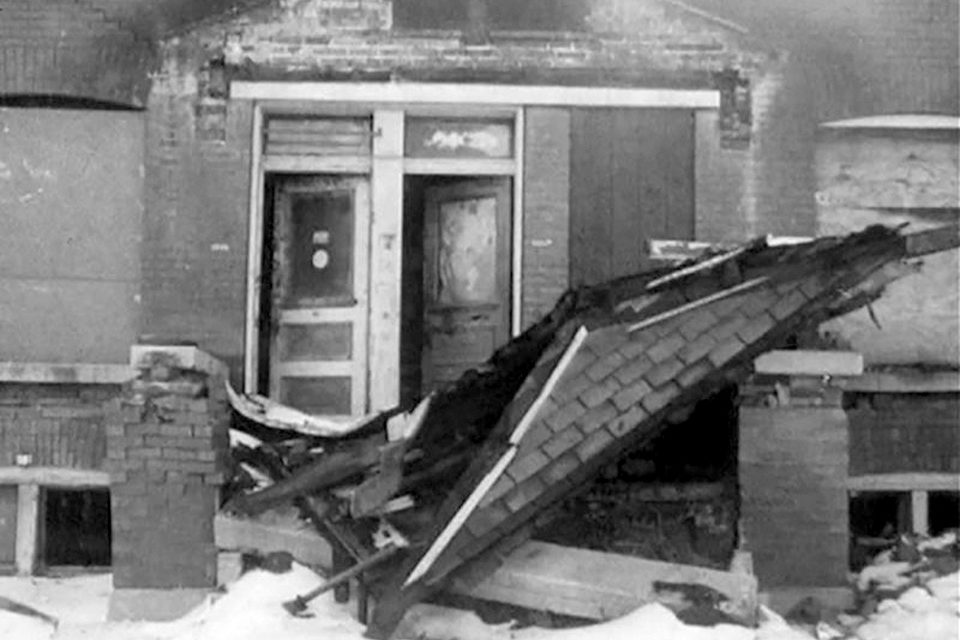
still/here (Courtesy of Christopher Harris)
In the 1970s, Hollywood kept using a run-down New York as an “authentic” backdrop, and again in the 1990s, the “inner city” came back. Was this film at all a reaction to popular depictions of urban spaces?
Yeah, I think so. I’m not sure if I was conscious of it at the time. The early incarnation of the film was to riff on Italian neorealism, like Godard with Rossellini [in Germany Year 90 Nine Zero]. It was going to be a very different film: I wanted to have actors, like in Blaxploitation, but reflecting on themselves as characters in the space. Pretty much Godardian, in these abandoned buildings, abandoned spaces. But I took the people out for several reasons. I didn’t want those spaces to become settings for characters.
You’ve talked about the Middle Passage in the slave trade in relation to your work. Could you elaborate on that?
I really feel like one of the fundamental aspects of the African-American experience and the African diaspora experience in the New World is of a fundamentally, profoundly different relationship to time and space than the dominant social order. I’ll give you a really simple banal example. So, recently, the rear driver-side turn signal on my car went out, and it was a few days before I had a chance to go to the auto part store and replace it. So the whole time I’m moving through space in my car, I’m very conscious of the possibility of being pulled over by the police. Just traversing space itself is fundamentally different—there’s an underlayer of being very conscious of your movement through space.
Talking about the Middle Passage, there’s a scholar at Northwestern named Harvey Young who wrote a book on black performativity. There’s a chapter on slave daguerreotypes, and it’s all about stillness. I thought about this long after making still/here. He talks about how the Africans were taken, and they were kept in a holding cell on a coast. So that’s like a temporal-spatial pause.
A kind of stasis.
Yeah, they were held immobile. Then they were loaded onto ships. All this time the ship is moving, they’re shackled. So they’re both immobile and in motion at the same time. And I think that’s analogous to the film strip and the projector, because there’s a still image that is static, but it’s always moving through the gate at the same time. That’s what [my new] film is sort of riffing on. But then Young wrote about how they were made to stand still on the auction block once they arrived. And then one more time: some slaves in a plantation in South Carolina were brought to a photography studio in Columbia, South Carolina, because an anthropologist at Harvard had commissioned photographs. Once again, because you needed a long exposure time, they were ordered to remain still. So that’s what I mean: literally there is another force that has autonomy over when and where you move in space, so your relationship to time and space is fundamentally different. The people who say they own you have a very different relationship to time and space than the people they say they own. They don’t have the same cosmology, the same universe.
That still resonates in a film like still/here. That’s the fundamental experience to me, the way I think about the experience of the African diaspora. A lot of cultural responses have to do with making space and making time, in the way that you take a very circumscribed situation, but within the circumscribed situation you make infinite variations on the possibilities. For example, John Coltrane in his solos: he’s remixing a set of notes in what’s like an infinite number of permutations. He takes this idea, and he’s working it to death, because he can go anywhere in a phone booth, basically. So with still/here, it’s a static image, but the sound is taking you all kinds of places. Even in that stasis, there’s infinite possibilities of how to read and experience it.
Nicolas Rapold is the editor-in-chief of Film Comment and hosts The Film Comment Podcast.







